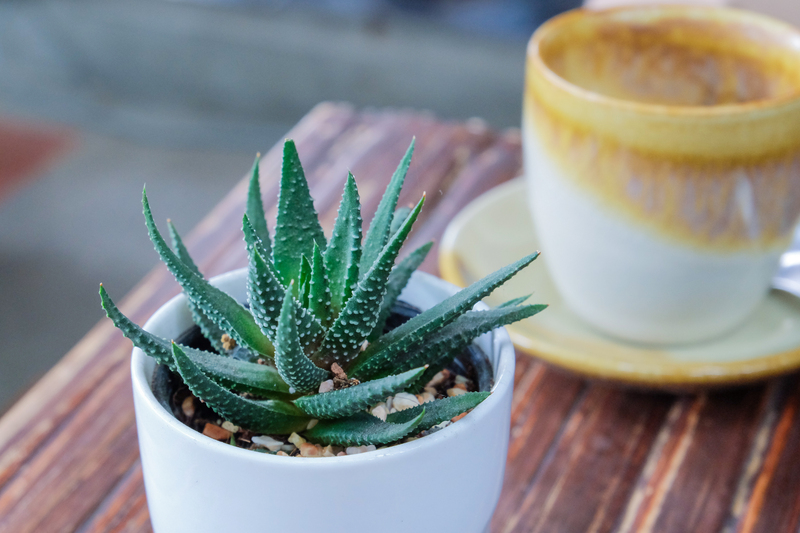Create a Vibrant Oasis with Your Very Own Herb Garden
Posted on 23/09/2025
Create a Vibrant Oasis with Your Very Own Herb Garden
Picture yourself stepping into your backyard, balcony, or even your kitchen and being greeted by a lush, aromatic, and vibrant oasis filled with fresh herbs. Not only do herbs add beauty and fragrance to your space, but cultivating your own herb garden is a delightful way to bring nature, health, and flavor into your everyday life. This comprehensive guide will show you how to start your own herb garden, care for it, and transform your home into a green sanctuary bursting with freshness.
Why Start Your Own Herb Garden?
Embarking on the journey of growing your own herbs offers myriad benefits, whether you reside in a spacious home or a cozy apartment. Here's why establishing a herbal oasis is a rewarding endeavor:
- Fresh Flavors On Demand: Snip basil, chives, or mint straight from your garden, elevating every culinary experience.
- Cost Savings: Growing herbs at home is far more economical than buying supermarket bunches that wilt quickly.
- Well-being and Mindfulness: Gardening reduces stress, fosters creativity, and connects you with nature.
- Sustainability: You'll reduce packaging waste and lower your ecological footprint.
- Health Benefits: Homegrown herbs are fresher, packed with nutrients, and free from unwanted chemicals.

Planning Your Home Herb Garden
Assess Your Space
Before you get started, take a closer look at where your herb oasis will flourish. Herbs can thrive in various environments:
- Outdoor Gardens: Perfect for those who have yard space or a sunny plot.
- Raised Beds and Planters: Ideal for patios and decks, allowing you control over soil and drainage.
- Indoor Herb Gardens: Transform windowsills or a kitchen counter with potted herbs.
- Vertical Gardens: Utilize wall planters or hanging baskets--a great option for balconies and small spaces.
Most herbs love at least 6 hours of sunlight daily. If in doubt, choose a south-facing window or the sunniest outdoor spot.
Select Your Herbs
Start with easy-to-grow, versatile varieties. Here are some popular choices for a thriving, colorful herb garden:
- Basil: Essential for pestos, salads, and Italian cooking.
- Parsley: A garnish hero packed with vitamins.
- Mint: Refreshing in drinks, desserts, and teas.
- Rosemary: Fragrant, drought-tolerant, and great for roasts and breads.
- Thyme: Compact and aromatic, perfect for stews and meat dishes.
- Cilantro: Crucial for salsas and stir fries.
- Chives: Mild onion flavor, lovely in omelets and salads.
- Sage, oregano, dill, and tarragon: Expand your palette as your green thumb develops.
Setting Up Your Herb Paradise
Soil and Containers
For a vibrant and healthy herb garden, prioritize quality soil and proper drainage.
- Soil: Use a rich, well-draining potting mix. Amend garden soil with compost to boost fertility.
- Containers: Choose pots with drainage holes. Terracotta is excellent for breathability, but plastic retains moisture better.
- Spacing: Give each herb ample room to grow. Crowded herbs risk disease and weak growth.
Watering and Feeding Your Herbs
Herbs generally prefer slightly moist soil, not soggy conditions. Here are some watering and nutrition tips:
- Water: Stick your finger into the soil; water when the top inch feels dry.
- Frequency: Outdoor herbs may need more frequent watering in hot weather. Indoors, avoid overwatering--herbs hate wet feet!
- Feeding: Use a gentle liquid fertilizer every 4-6 weeks during the growing season. Too much fertilizer can dull flavor intensity.
Sunlight Requirements
Sun is crucial for a thriving herb garden. Most herbs crave full sunlight (6-8 hours a day), though mint and parsley tolerate partial shade. Rotate pots regularly to prevent leggy growth indoors.
Essential Care Tips for a Flourishing Herb Garden
- Harvest Regularly: Snip leaves frequently to encourage bushy, continuous growth.
- Pinch Flower Buds: Remove flowers to maintain the best flavor and prolong leaf production.
- Prune Correctly: Use sharp scissors and only take one-third of the plant at a time to avoid shock.
- Pest Management: Inspect regularly for aphids or spider mites. Use neem oil or insecticidal soap if needed.
- Season Extension: Bring tender herbs like basil indoors before the first frost. Perennial herbs like rosemary can overwinter in pots in sheltered areas.
Creative Ideas to Design Your Herb Oasis
Themed Herb Gardens
- Italian Herb Garden: Basil, oregano, rosemary, sage, and thyme for classic Mediterranean dishes.
- Tea Lover's Corner: Mint, lemon balm, chamomile, and lavender for soothing herbal infusions.
- Pollinator Paradise: Add chives, borage, and thyme to attract bees and butterflies.
Unique Layouts and Displays
- Spiral Herb Garden: Construct a raised spiral from stones for a whimsical, space-saving feature.
- Vertical Herb Walls: Use wall-mounted pockets or wooden pallets to grow upwards, maximizing small areas.
- Windowsill Wonders: Line up cheerful pots on your kitchen ledge for easy harvesting while cooking.
- Hanging Baskets: Suspend herbs like thyme and trailing rosemary for decorative drama.
Companion Planting in Herb Gardens
Herbs are not just pretty and tasty--they're also natural allies in the garden. Their unique scents can repel pests and encourage healthy growth in neighboring vegetables and flowers.
- Basil: Plant near tomatoes to improve growth and flavor while repelling pests like aphids.
- Chives: Deter aphids and improve the health of carrots and roses.
- Mint: Repels ants, cabbage moths, and other insects. (Tip: Contain its vigorous roots in pots!)
- Thyme and Sage: Discourage whiteflies and cabbage moths; great companions for brassica crops.
Harvesting and Using Your Homegrown Herbs
Successfully creating your own herb garden is just the beginning--the real magic happens when you harvest and savor your bounty! Here's how to ensure the freshest, most flavorful results:
How and When to Harvest
- Best Time: Harvest in the morning after dew dries, but before sun wilts the oils.
- Snip Smart: Use clean scissors and cut just above a leaf pair or node for healthy regrowth.
- Basil and Tender Herbs: Pinch frequently to keep them bushy and productive.
- Woody Herbs (Rosemary, Thyme, Sage): Trim only the stem tips and avoid hard pruning into old wood.
Preserving Your Herbs
- Freezing: Chop and pack herbs in ice cube trays with olive oil or water for year-round use.
- Drying: Hang small bunches upside down in a dark, airy spot, or use a dehydrator for quick results.
- Infusions: Create herb oils, vinegars, and pestos to preserve and elevate your meals.
Culinary Inspiration: Savor Your Herb Oasis
- Flavorful Salads: Fresh basil, parsley, and chives add zing straight from your homemade herb garden.
- Herb-Infused Butters: Blend chopped soft herbs into butter for an aromatic spread.
- Hearty Roasts and Soups: Toss woody sprigs into roasting pans or simmering stocks.
- Refreshing Drinks: Mint transforms water, lemonade, and cocktails into cooling delights.
- Homemade Tea: Steep chamomile, lemon balm, or mint for calming cups of herbal tea.
Common Challenges and How to Overcome Them
Dealing with Pests and Disease
- Aphids and Mites: Blast with water or treat with neem oil as needed.
- Powdery Mildew: Improve air circulation and avoid wetting foliage when watering.
- Snails and Slugs: Remove by hand or use copper tape around containers.
Solving Light and Water Issues
- Leggy Growth: Move to a brighter location or supplement with grow lights.
- Drooping and Yellowing: Usually from overwatering. Let soil dry before watering again.
- Leaf Burn: Provide mid-day shade or move pots during extreme summer heat.

Expanding Your Herb Haven
Grow More, Share More
Once your herb oasis thrives, consider sharing the joy. Offer cuttings or small potted herbs to friends or neighbors, enhancing community bonds and inspiring others to create their own garden sanctuary.
Advanced Techniques
- Hydroponic Herb Gardens: Grow herbs indoors without soil using water-based systems.
- Microgreens: Sow herb seeds close together for tasty shoots ready in just a few weeks.
- Perennial Herbs: Invest in shrubs like rosemary and lavender for years of beauty and bounty.
Conclusion: Transform Your Space Into a Vibrant Oasis
By following these steps, anyone--from beginners to seasoned gardeners--can cultivate a fragrant, vibrant oasis with their very own herb garden. Besides the sheer pleasure of growing and cooking with fresh herbs, your garden will become a haven that supports well-being, sustainability, and creativity. Whether your sanctuary is a small sunny window or an expansive backyard, the journey to a herbal retreat starts with a single seed--so dig in, get planting, and let your herb oasis flourish!
Ready to create your own herb garden oasis? Start now, and watch your green dreams bloom!

